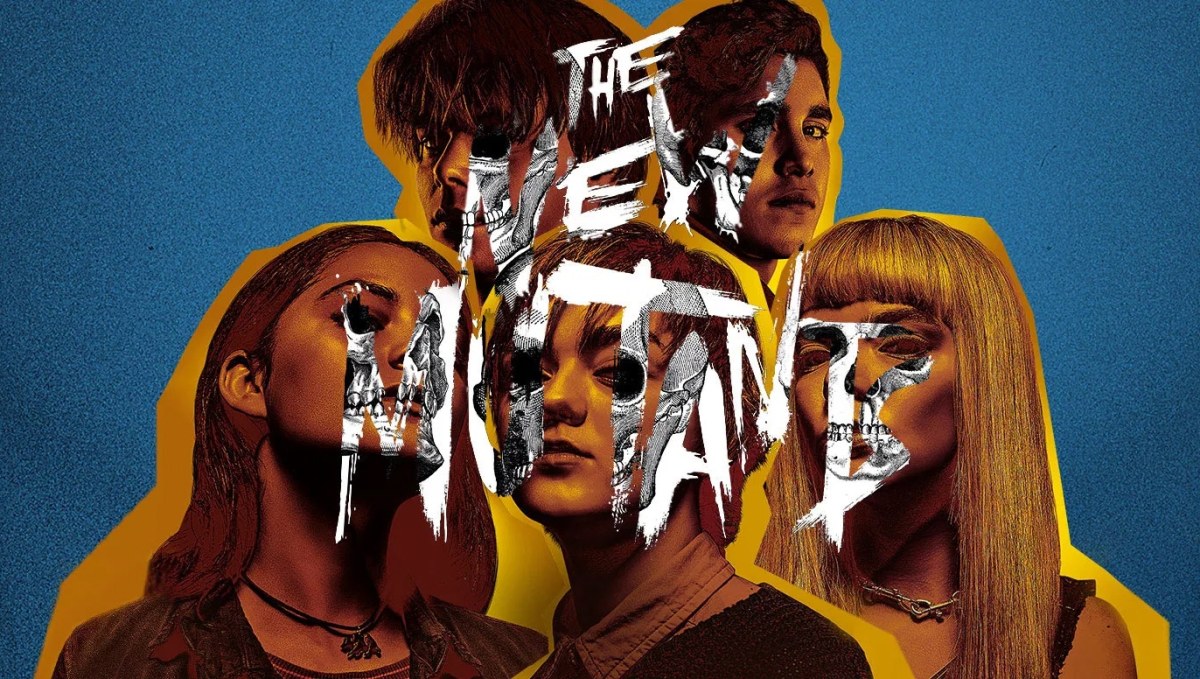Note: Darren is based in Ireland, where cinemas have reopened and it is (relatively) safe to attend screenings. This The New Mutants review should not be considered an endorsement of going to the cinema; please consult a local or national public health professional before attending. Take care of yourselves out there.
In the words of former 20th Century Fox CEO Stacey Snider, The New Mutants is supposed to be The Breakfast Club meets The Shining. In reality, it’s more like a superpowered version of the (justifiably) forgotten Sylvester Stallone vehicle D-Tox.
Danielle Moonstar (Blu Hunt) suffers a horrible trauma. In the dead of night, her reservation is attacked by a strange force. Her father (Adam Beach) gets her to safety but is lost when he tries to help others. There are no survivors. Dani is taken to a strange facility operated by the mysterious Dr. Reyes (Alice Braga), who explains that the institution is a safe place for mutants whose powers represent a threat to themselves or others. It quickly becomes clear the hospital is anything but safe.
There has been a lot of digital ink spilled about the inevitability of “superhero fatigue,” from both journalists and filmmakers. The continued success of the Marvel Cinematic Universe would suggest that such fatigue is a long way off. Still, hybridization is a smart way to keep the genre vibrant. There’s something to be said for blending a superhero story with both a coming-of-age adventure and a horror movie. Unfortunately, The New Mutants combines the worst of all those worlds.

The drama behind the scenes on The New Mutants has been well documented, with reported tonal clashes between director Josh Boone and the studio. The acquisition of 20th Century Fox by Disney reportedly delayed any post-production progress on the film enough that the movie’s teenage co-stars aged too much to make reshoots possible. There were murmurs of “contracts that guarantee a theatrical release,” keeping Disney from just dumping it on streaming.
The problems with The New Mutants are readily apparent. It is a bad horror film and a lifeless superhero blockbuster. At its best, the horror genre encourages experimentation. Studios like horror movies because they offer solid returns on a cheap investment, and this can provide a low-stakes testing ground for writers and directors with relatively minimal interference. However, The New Mutants feels like it has been micromanaged through every stage of its development.
The New Mutants is too bloodless to work as a horror movie. Its primary cast consists of five characters drawn from the eponymous comic, and the film is positioned (ironically) as the launching ground for a trilogy. Rahne Sinclair (Maisie Williams), Illyana Rasputin (Anya Taylor-Joy), Sam Guthrie (Charlie Heaton), and Roberto da Costa (Henry Zaga) are hardly the biggest name in X-Men comics, but they are still too valuable an intellectual property to place in real danger.
A great director can create terror without resorting to death to escalate the stakes; nobody dies in Poltergeist or The Babadook. Instead, The New Mutants depends upon broadly drawn schlock. Director Josh Boone relies heavily on lazy jump scares, all clumsily signposted. The film occasionally pushes for shock, writing mass murder and childhood sexual abuse into characters’ backstories, but it plays as hollow posturing – a teenager’s idea of what “edgy” might look like.

The script, from Boone and co-writer Knate Lee, is likewise clumsy at best. It leans on the classic X-Men and horror trope of using these narrative devices to articulate teenage anxieties – fears about changing bodies, about sexuality, about responsibility. Repeatedly, The New Mutants flags its obvious influences by having the characters watch Buffy the Vampire Slayer on the communal television. This only underscores how much better a 20-year-old television show is at doing this kind of thing.
At one point, Boone and Lee literally hook their teenage characters up to a lie detector to provide the obligatory backstory as they play truth or dare. (“You can’t say dare,” states Illyana, presumably because that would require showing rather than telling.) The New Mutants is structured as a story about Dani and told from her perspective, but she spends much of the film – and crucially the climax – as a passenger in her own narrative.
There’s an inherent suspension of disbelief baked into horror movies and superhero stories in particular, with an understanding that the stories should be interesting enough that the audience doesn’t pick at logic gaps while watching the film. Still, The New Mutants is littered with such problems. Why does it take everybody so long to realize that terrible things only started happening after Dani arrived? Why does it take them so long to sneak into Reyes’ office to read their own files?

The cast hints at a better movie. As Rahne Sinclair, Maisie Williams demonstrates just how good she is at anchoring a young character’s emotional arc, bringing a tenderness and vulnerability that the rest of the film doesn’t deserve. As one might expect from her breakout roles in The Witch and Split, Anya Taylor-Joy is right at home in a horror movie like this. She goes bigger and hammier, with an accent that would make Kenneth Branagh blush. At least somebody is having fun.
In its third act, The New Mutants pivots sharply to stock superhero stuff. There are codename in-jokes. There is a giant computer-generated monster of questionable quality. There is a battle with little sense of spatial awareness. There’s also an army of henchmen to dispatch; aside from the obvious youthfulness of Taylor-Joy and Williams, nothing about The New Mutants screams 2017 as loudly as the fact that its pre-climax essentially hinges on an army of Slender Men.
Along the way, there are the obligatory teases of the sequels and spin-offs that were originally planned for The New Mutants. There is a continuity-laden mystery about who exactly serves as Reyes’ mysterious benefactor in running this facility for dysfunctional young mutants. There’s gratuitous use of stock footage from Logan. There are hints about certain characters’ origins and attention drawn to areas that follow-ups might want to explore. None of it is especially interesting.
This, then, is how shared universes die. Not with a scream, but with a barely audible sigh.






Published: Aug 30, 2020 11:00 am